
View synthesis is a key problem at the intersection of computer vision and computer graphics. It refers to creating a new view of a scene from multiple pictures of the scene.
To accurately synthesize a new view of a scene, a model needs to capture multiple types of information from a small set of reference images, such as detailed 3D structure , materials and lighting, etc.
Since researchers proposed the Neural Radiation Field (NeRF) model in 2020, this issue has also received increasing attention, greatly promoting new views Synthetic performance.

One of the super big players is Google, which has also published many papers in the field of NeRF. This article will introduce two A paper published by Google at CVPR 2022 and ECCV 2022, describing the evolution of light field neural rendering model.
The first paper proposes a two-stage model based on Transformer to learn to combine reference pixel colors. First, the features along the epipolar lines are obtained, The features along the reference view are then obtained to generate the color of the target ray, greatly improving the accuracy of view reproduction.

Paper link: https://arxiv.org/pdf/2112.09687.pdf
ClassicLight Field RenderingCan accurately reproduce view-related effects such as reflection, refraction, and translucency, but requires dense view sampling of the scene. Methods based on geometric reconstruction only require sparse views, but cannot accurately simulate non-Lambertian effects, that is, non-ideal scattering.

The new model proposed in this article combines the advantages of these two directions and alleviates its limitations, by focusing on light By manipulating the four-dimensional representation of the field, the model can learn to accurately represent view-dependent effects. Scene geometry is implicitly learned from a sparse set of views by enforcing geometric constraints during training and inference.
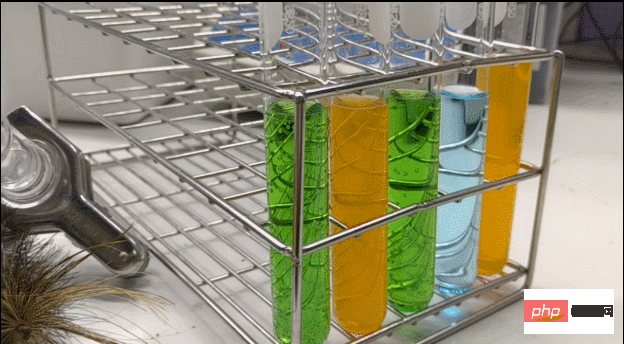
The model outperforms state-of-the-art models on multiple forward and 360° datasets and has severe line-of-sight dependence There is greater leeway in scenes of sexual change.
Another paper solves the generalization problem of synthesizing unseen scenes by using Transformer sequences with canonicalized position encoding . After the model is trained on a set of scenes, it can be used to synthesize views of new scenes.

Paper link: https://arxiv.org/pdf/2207.10662.pdf
This article proposes a different paradigm that does not require depth features and NeRF-like volume rendering. This method can directly predict the color of target rays in new scenes by simply sampling a patch set from the scene.
First use epipolar geometry to extract patches along the epipolar lines of each reference view, and assign each patch Linearly projected into a one-dimensional feature vector, this set is then processed by a series of Transformers.
For position encoding, the researchers used a method similar to the light field representation methodto parameterize the rays. The difference is that the coordinates are normalized relative to the target ray, and also This makes the method independent of the reference frame and improves versatility.
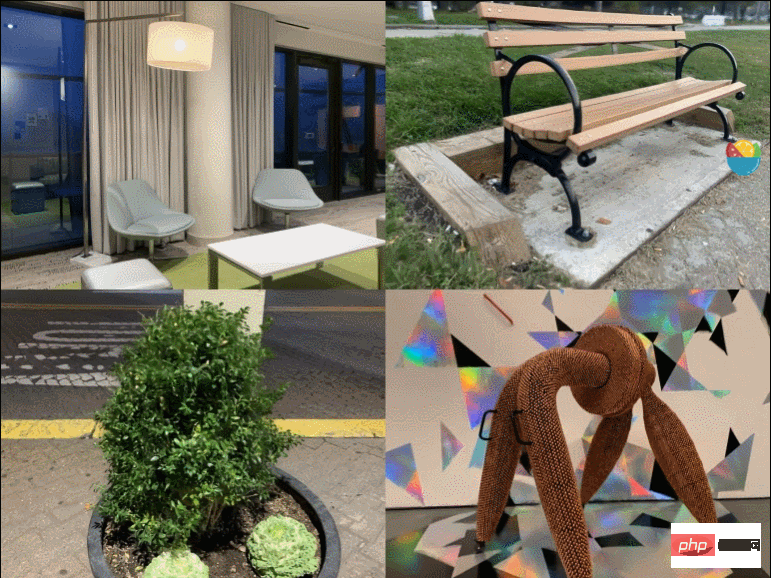
The innovation of the model is that it performs image-based rendering, combining the color and characteristics of the reference image to render a new view, and it is purely It is based on Transformer and operates on image patch sets. And they utilize 4D light field representations for position encoding, helping to simulate view-related effects.
Final experimental results show that this method outperforms other methods in new view synthesis of unseen scenes, even when trained with much less data than The same is true for ##.
Light Field Neural RenderingThe input to the model includes a set of reference images, the corresponding camera parameters (focal length, position and spatial orientation), and the user's desired The coordinates of the color's target ray.
In order to generate a new image, we need to start with the camera parameters of the input image, first obtain the coordinates of the target ray (each one corresponds to a pixel), and for each coordinate Model query.
The researchers’ solution was to not fully process each reference image, but only to look at the areas that might affect the target pixels. These regions can be determined by epipolar geometry, mapping each target pixel to a line on each reference frame.
For the sake of safety, you need to select a small area around some points on the epipolar line to form a set of patches that will be actually processed by the model, and then apply the Transformer to this set of patches. Get the color of the target pixel.
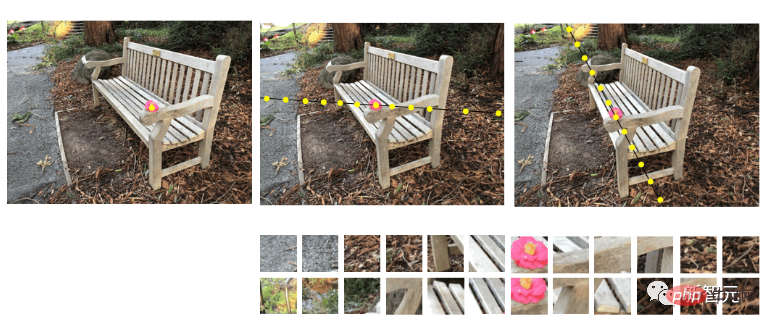
Transformer is particularly useful in this case because the self-attention mechanism in it can naturally take the patch collection as input and the attention weight itself It can be used to predict the color of output pixels by combining reference view colors and features.
In light field neural rendering (LFNR), researchers use two Transformer sequences to map a collection of patches to target pixel colors.
The first Transformer aggregates information along each epipolar line, and the second Transformer aggregates information along each reference image.
This method can interpret the first Transformer as finding the potential correspondence of the target pixel on each reference frame, while the second Transformer is responsible for occlusion and line-of-sight dependence effects. reasoning, which is also a common difficulty with image-based rendering.
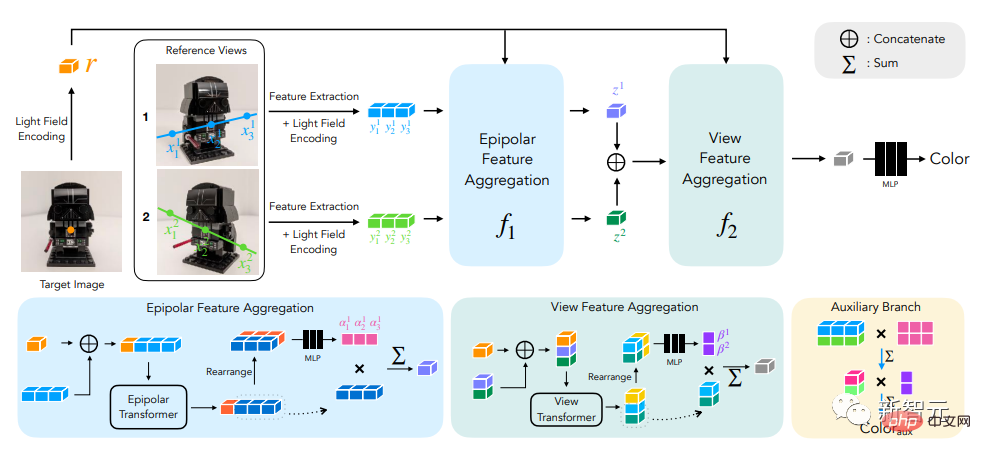
LFNR outperforms the sota model on the most popular view synthesis benchmarks (NeRF’s Blender and Real Forward-Facing scenes and NeX’s Shiny) The peak signal-to-noise ratio (PSNR) is improved by up to 5dB, which is equivalent to reducing the pixel-level error by 1.8 times.
LFNR can reproduce some of the more difficult line-of-sight-dependent effects in the NeX/Shiny dataset, such as rainbows and reflections on CDs, reflections, refractions and translucency on bottles.
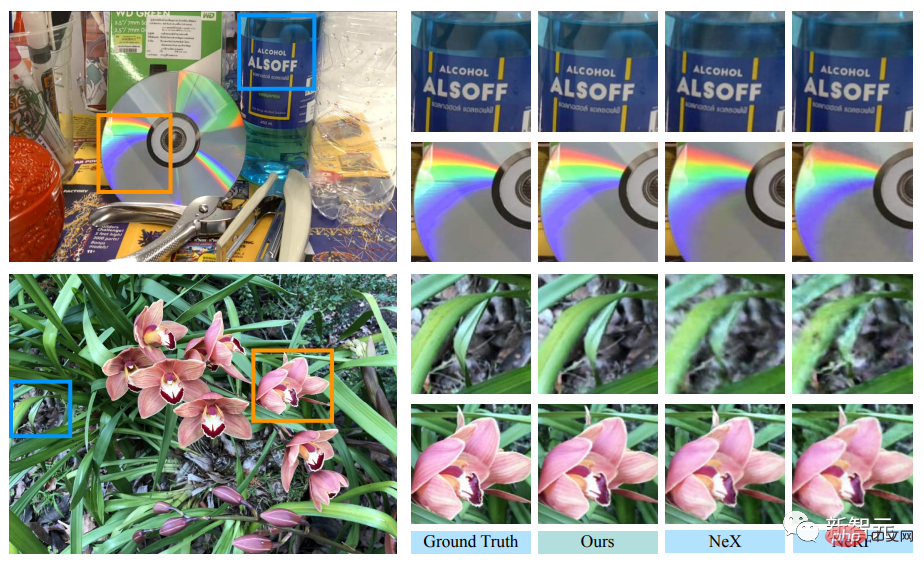
Compared with previous methods such as NeX and NeRF, they are unable to reproduce line-of-sight-related effects, such as in the NeX/Shiny dataset Translucency and refractive index of test tubes in a laboratory scene.

But LFNR also has limitations.
The first Transformer folds information along each epipolar line independently for each reference image, which also means that the model can only decide what information to retain based on the output ray coordinates and patches of each reference image. , which works well in training on a single scene (like most neural rendering methods), but it cannot generalize to different scenes.
Generalizable models are important because they can be directly applied to new scenarios without retraining.
The researchers proposed a general patch-based neural rendering (GPNR) model to solve this shortcoming of LFNR.

By adding a Transformer to the model so that it runs before the other two Transformers and between the points of the same depth of all reference images exchange information between.
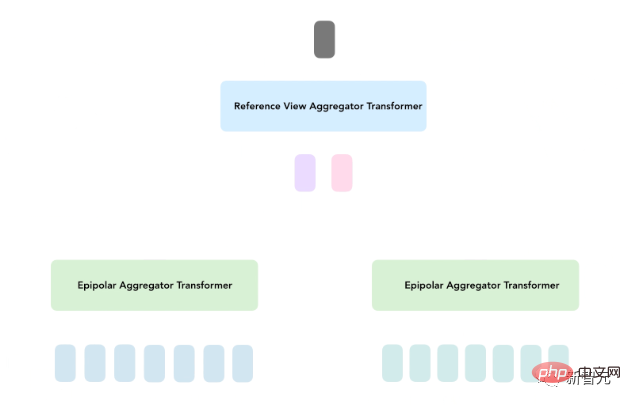
GPNR consists of a sequence of three Transformers that map a set of patches extracted along epipolar lines into pixel colors. Image patches are mapped to initial features through linear projection layers, and then these features are continuously refined and aggregated by the model to finally form features and colors.
For example, after the first Transformer extracts the patch sequence from "Park Bench", the new model can use "Flowers" that appear at corresponding depths in both views Such clues indicate a potential match.
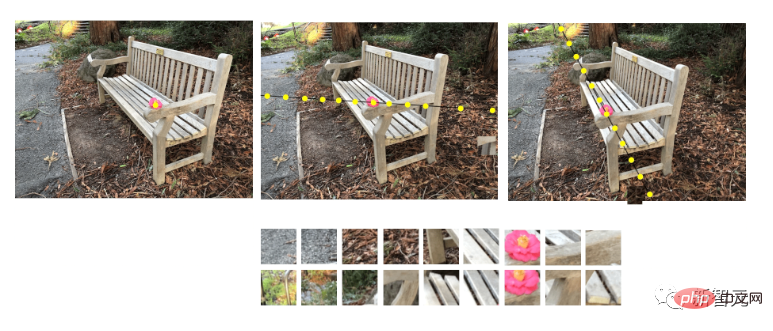
Another key idea of this work is to normalize the position encoding according to the target ray, because we want to generalize in different scenarios, Quantities must be represented in a relative rather than an absolute frame of reference
To evaluate the model's generalization performance, the researchers trained GPNR on a set of scenarios and tested it on new scenarios .
GPNR improves by an average of 0.5-1.0 dB on several benchmarks (following IBRNet and MVSNeRF protocols), especially on the IBRNet benchmark, where GPNR improves using only 11% of the training scenarios. case, it exceeds the baseline model.

GPNR generated view details on maintained scenes in NeX/Shiny and LLFF without any fine-tuning. GPNR more accurately reproduces details on the blades and refraction through the lens than IBRNet.

The above is the detailed content of Just train once to generate new 3D scenes! The evolution history of Google's 'Light Field Neural Rendering”. For more information, please follow other related articles on the PHP Chinese website!




